Women and Hybrid Strength Training
By Annie Vo, Senior RKC Instructor, PCC Team Leader
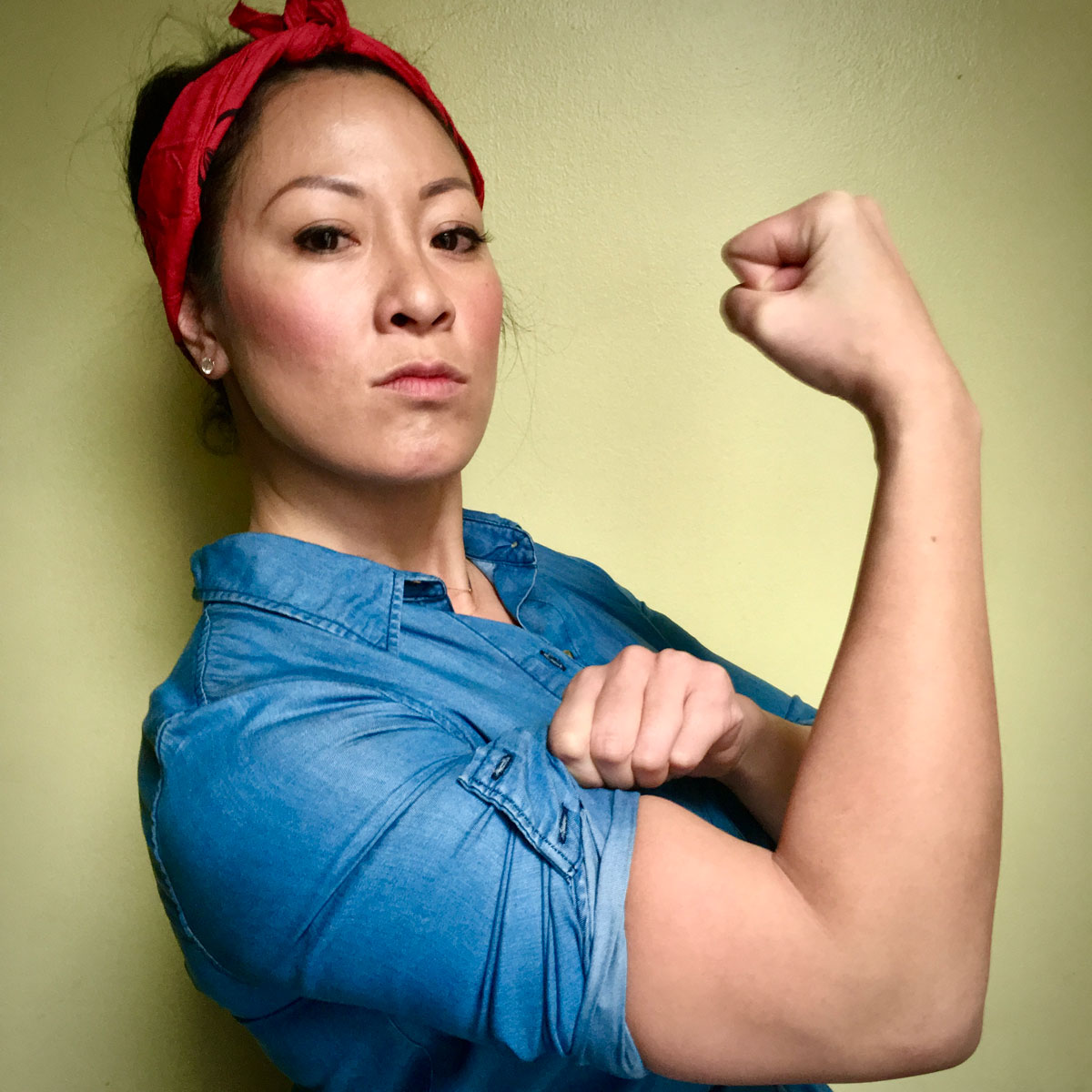 ANNIE the Riveter
ANNIE the Riveter
As an old school RKC from 2010, I’ve hoisted thousands of kilos of iron and certified hundreds of kettlebell instructors. As a PCC Team Leader, I’ve trained and taught calisthenics all over the world. I earned my barbell pedigree through years of testing my mettle at Gym Jones in Utah. You see, I’ve sculpted my own workouts—and have transformed hundreds of others—using weighted resistance training combined with calisthenics.
"Why" Before "How"
Often when selecting exercises or programs, individuals focus on the characteristics of an exercise modality, while paying less attention to the characteristics of the person performing the exercise.
In other words, someone decides they want to "train calisthenics," which of course is a noble pursuit, but it’s putting the "how" before the "why". Perhaps simply choosing to get stronger/fitter/leaner would make more sense than first selecting the method to do so. Maybe a program consisting of 100% calisthenics is the appropriate course.
Or maybe it’s not.
It is possible that incorporating weight training or weighted calisthenics may be best for a given individual. The goal should be the result, not the vessel that got you there. Strength training gains are achieved through progressive resistance. This is true whether moving an external load or performing bodyweight exercise.
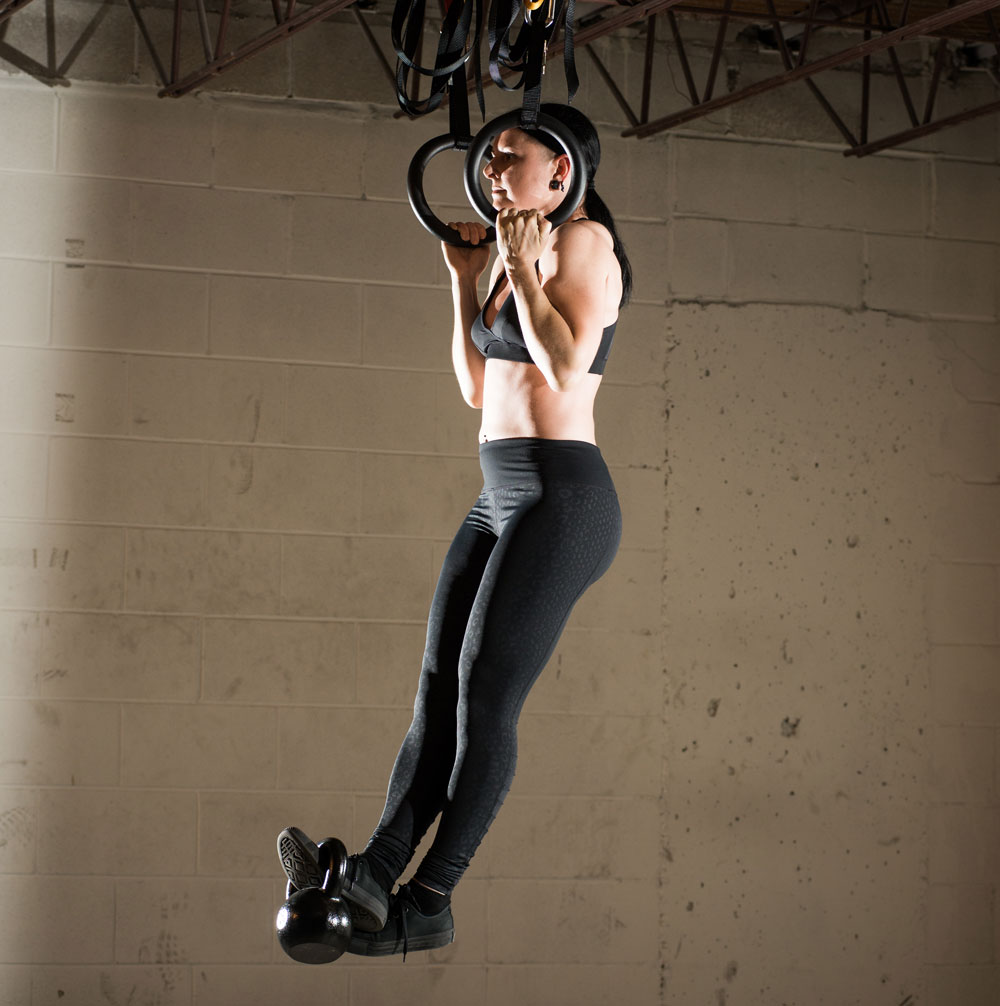 Adrienne Harvey, weighted ring pullups
Adrienne Harvey, weighted ring pullups
This is not to say that exercise modality does not matter. As Danny Kavadlo explains in
Hybrid Strength Training (of which I am a proud contributor, both as a model and photographer), there are many cases when it does. Some examples include training with limited equipment (calisthenics makes sense), targeting a specific muscle group (weight training makes sense), learning movement fundamentals (calisthenics), and training for max load (weight training). This does not contradict the fact that exercise selection should be based on what delivers desired results, not on an allegiance to a type of training—even a really great one.
Sisters Are Doin’ It For Themselves
I am not just a spokesperson for the virtues of fusing fitness methodologies. I am a champion of women’s strength both in and out of the gym.
Over the last 12 years of working as a professional fitness trainer, I’ve helped women PR on deadlifts, squats, push-ups, pull-ups, and other record-breaking achievements. Last May, I—along with Master RKC Darius Gilbert—certified the largest single group of female RKC’s in recent history. I celebrate the strength and uniqueness of women every day.
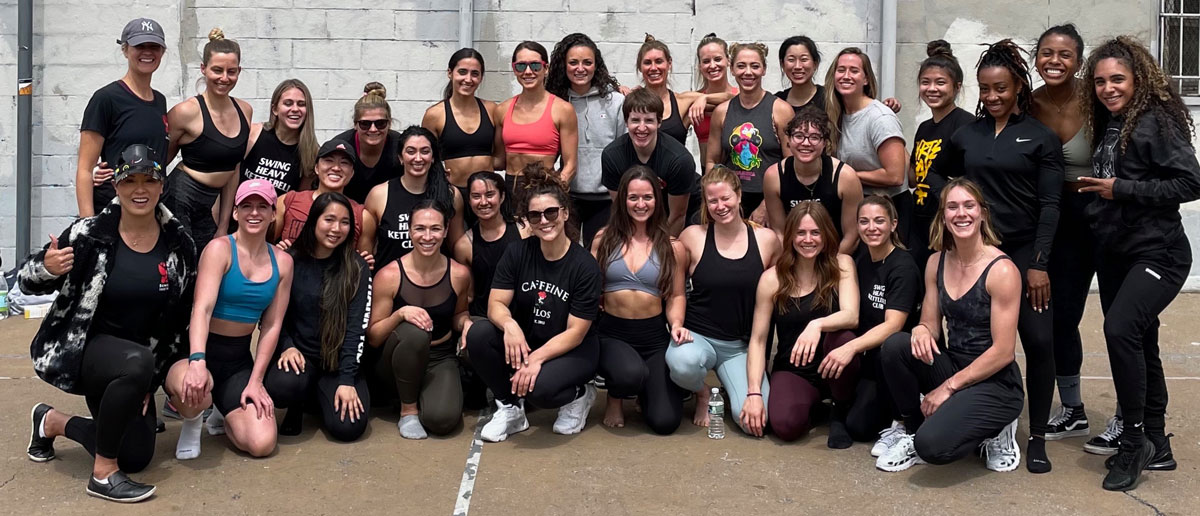 The largest single group of female RKC instructors certified at the same time!
The largest single group of female RKC instructors certified at the same time!
And, yes, women are unique. We are physically different than men. This is
not a controversial statement.
Let’s Talk Pull-ups
Calisthenics is often celebrated for its simplicity: little to no equipment is needed. But despite this beautiful minimalism, there are potential limitations, particularly regarding pull-ups. Generally speaking, women possess less of a genetic potential for upper body strength than men. This, combined with a female’s lower center of gravity, makes pull-ups extra challenging. Does that mean we are not capable of killing it on the pull-up bar? Of course not. But sometimes we need a different approach.
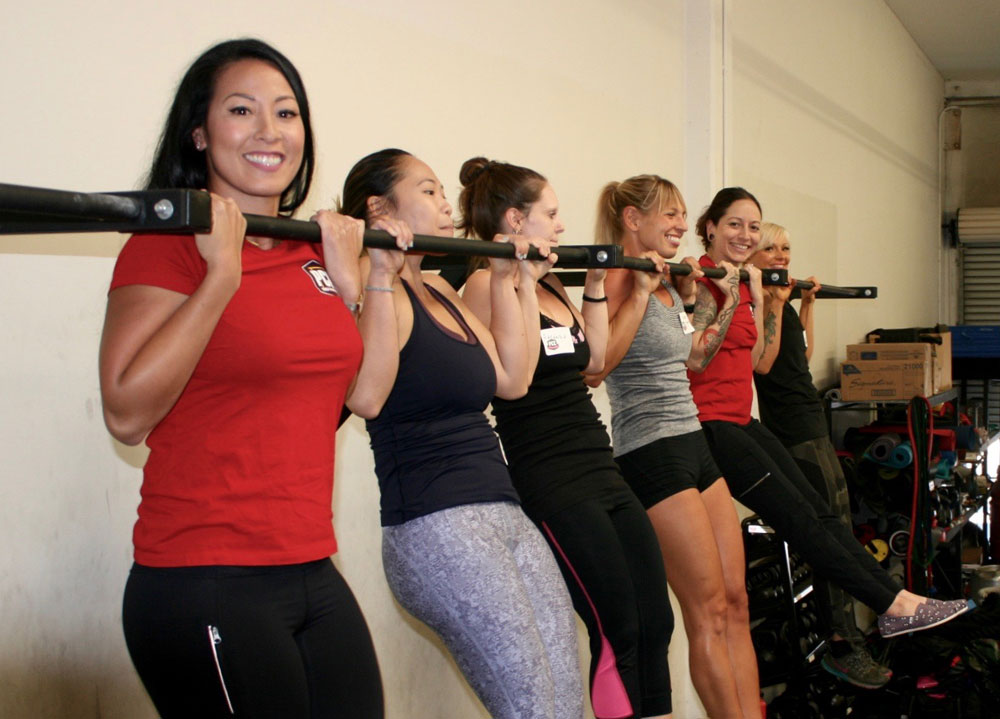 Pullups at the PCC!
Pullups at the PCC!
In calisthenics, you increase the resistance applied against a particular muscle group by implementing exercises that are progressively more difficult. (Hence: "progressive calisthenics"). Conversely, exercises can be regressed to make them more accessible. For individuals, both women and men, for whom a pull-up is a lofty goal, a regressed version of a pull-up is often recommended, but it needn’t be the only approach.
Hybrid Strength Training addresses this and offers many alternatives.
Weight training exercises such as barbell rows and dumbbell rows are presented side-by-side with calisthenics staples like V-pull-ups and bodyweight rows. There’s also a sidebar discussing the reasons one would incorporate resistance band-assisted pull-ups and even lat pull-downs. At the risk of breaking bodyweight hearts, I’ll say it: pull-up variations are simply not appropriate for everybody.
She’s Got Legs
As we discussed, women generally have less of a propensity for upper body pulling power than men. That’s fine; we have our strengths too. In fact, women tend to have
better mobility in their hips and spine than men do. This leads to advantages when deep squatting, hip bridging, and even performing the elusive pistol squat, a supreme combination of flexibility, strength and balance.
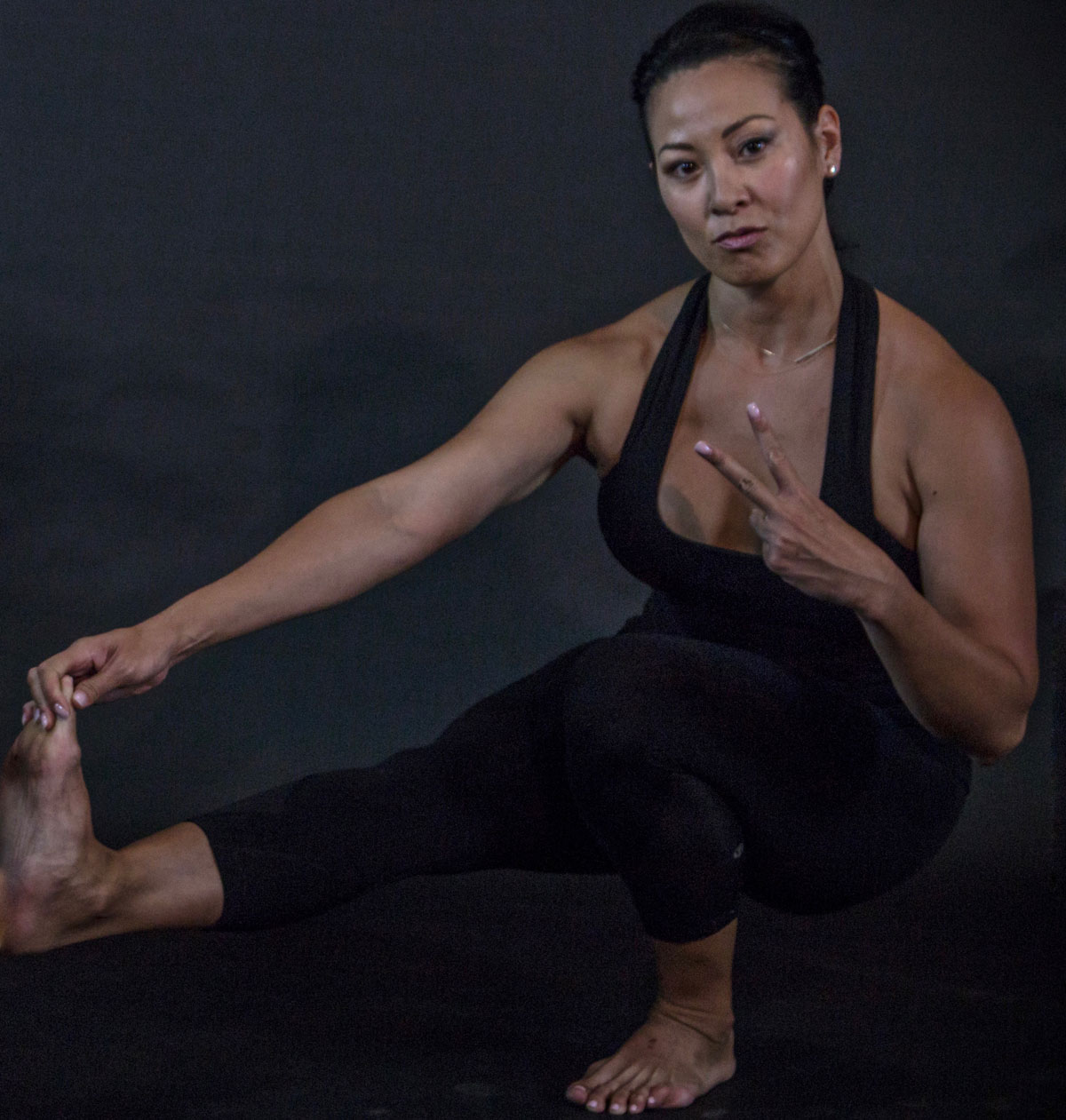 Annie Vo, pistol squat
Annie Vo, pistol squat
You see, a fundamental program of bodyweight is necessary before anyone attempts large, compound barbell lifts. One cannot be expected to move safely and confidently with a loaded bar until she can already maneuver well without one. All too often I’ve seen programs that jump right into the lifting, ignoring the fact that a baseline in calisthenics is indispensable. That is not the case with the programs in
Hybrid Strength Training.
On the other end of the spectrum, sometimes leg programs designed specifically for females focus too much on appearing light, girlish, and "user friendly". (Think Tracy Anderson recommending that women never lift over 2 lbs.) This is rubbish. The truth is that women should not be afraid to pick up the iron. In fact, barring injury or disability, we
should lift heavy!
The programs in
Hybrid Strength Training employ calisthenics, barbells, and dumbbells. They include a large variety of bodyweight basics, but do not back away from advanced calisthenics, heavy barbell squats, deadlifts, and more.
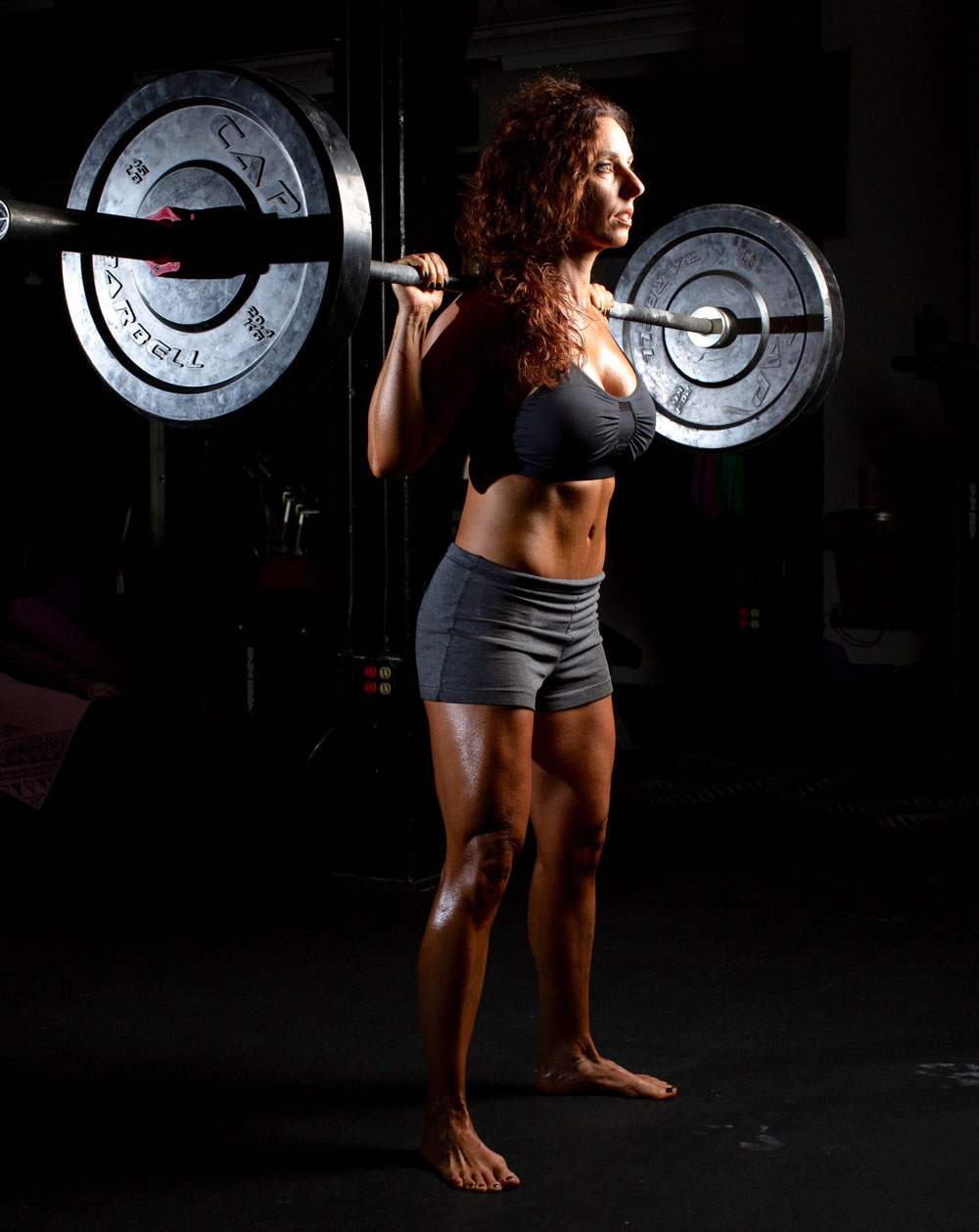 Kristy Agan, PCC Instructor, Senior RKC Instructor
Kristy Agan, PCC Instructor, Senior RKC Instructor
Follow Through
Although exercise is a physical endeavor performed by the body, staying consistent over time is done by the mind. Mental plateaus are often more common than physical and having a large toolbox from which to draw can be helpful. This is true for men as much as women.
An exercise program will only work if you do. So whatever exercises you determine are best for you, show up, work hard, and be consistent. No excuses. We can do it!
Back